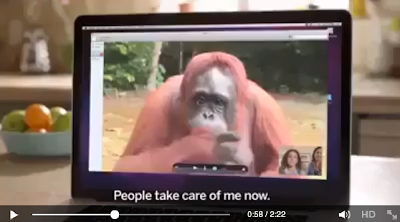EDITORS NOTE: With the start of the New Year, we thought to reprise an article we published previously. It's certainly good to do so, so that all the new African Dwarf Frog owners who just got their Christmas present, and are seeking out information may be able to find it.
Anyone searching the internet about African Dwarf Frogs will soon find the following "Conventional Wisdom" in one form or another...
"...Typically, one frog for every 1 or 2 gallons of water is ideal...."
Ideal for WHO? The frog? Or the person selling Aquariums larger than 1-2 gallons? Many websites seem to follow this common misconception without any real explanation, other than a misguided human emotion that these frogs wouldn't like confined spaces.
There's no scientific rationale behind requiring 1-2 gallons per frog. It's a line of logic for setting up a standard aquarium, and
taking in consideration of the needs of fish, who naturally need space to swim, and sufficient amounts of oxygenated water to breathe. Neither of which the species of African Dwarf Frog require. However, 1-2 gallons per frog would be good if you are setting up a unfiltered tank like a Goldfish Bowl... you'd then only have to change the water around every two weeks or so.
 |
| No oily skin... |
|
In nature, African Dwarf Frogs only have need of water to keep their skin supple. ADF's do not produce a skin mucus which enables them to emerge out of water onto land like other amphibians, that's the
only reason they are fully aquatic. Other than that, they could live in water which can merely keep their skin moist. Of course, they can be at home in larger water volumes, but as for a NEED to have such...
emphatically NO!
A more critical water need for this species is WATER DEPTH. Most specifically, THE LESS THE BETTER...
 |
| ADF Ancestral Home |
In nature... such as in the
Rainforests of Cameroon in West Africa, the African Dwarf Frog evolved in shallow rainforest swamps, in a habitat of stagnant low-oxygenated water, in water depths of
8 inches of water or less. Unlike gilled animals such as fish, ADF's breathe air with lungs, and go to the surface to gulp air. As a bottom dwelling creature, the frog subsists quite well in shallow water depths which give them a quick trip to the surface to breathe. Put them in an environment where the water depth is deeper, the frog can survive, but the longer trip to the surface for air is more stressful, and in the wild, would present more exposure to the frog from predators. In a natural environment, you would not find these frog in deeper water than a foot.
The idea that these frogs need a lot of space, is also a misconception. African Dwarf Frogs main roles in life is simply to eat, avoid getting eaten, and make more frogs. In nature, it's behavior is dictated by instinct & environment, which again, in nature would be in the muddy bottom of a rainforest swamp.
 |
| Here's lookin' at you... I think! |
|
The frog is a natural wait & pounce creature in the method of acquiring it's meal. The African Dwarf Frog has very poor eyesight, a heightened sense of vibrations in the water, and a keen nose to smell out food. You may have seen these frogs in a familiar "Zen Pose" standing motionless. This is a evolved trait of still stalking, waiting for something, like a tasty water bug to wander by. It also is a defensive posture that helps make them invisible to larger predators. Unlike fish, ADF's don't school & swim seeking food, preferring instead for food to come to them. Kinda like a aquatic couch potato. They do not migrate, & they do not have a extensive range, except along the shallows of whatever shallow pool of water they'd inhabit.
Remember, when searching the web, seeking out information about African Dwarf Frogs (or ANY topic) there is tons of "Conventional Wisdom" out there... some accurate, some simply a regurgitation of other information posted elsewhere, without much foundation of fact. It sounds right, but really...
is it really right? If you have questions, count on us to help give you answers. Our wisdom isn't always conventional, but at least count on it to be grounded in fact.

























